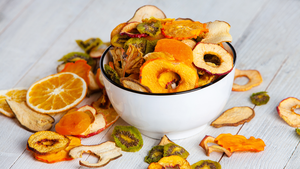Dairy and butter prices push global food commodity costs down in July
Led by declines in dairy and sugar, global agricultural food commodity prices fell sharply in July, marking the first significant month-on-month decline since December 2017, according to the latest data from the UN’s Food Agriculture Organization (FAO).

The FAO Food Price Index averaged 168.8 points in July, down 6.5 points (3.7 percent) from June and 10.3 points (3.7 percent) from the same time last year, reflecting notable declines in all major traded commodities.
The Cereal Price Index averaged 160.9 points in July, down nearly 6 points (3.6 percent) from June and 1.3 points (0.8 percent) below its level in the corresponding period last year. Export quotations for wheat, maize and rice all declined, although wheat and maize values edged higher toward the end of July.
The Vegetable Oil Price Index averaged 141.9 points in July, down 4.2 points (or 2.9 percent) from June, its sixth consecutive monthly decline, and is now at its lowest level since January 2016. Part of the July slide was driven by spill-over weakness from the soybean market, which is affected by the trade dispute between China and the United States of America. Rapeseed oil values trended upwards, however, buoyed by improved demand from biodiesel producers and negative crop prospects in the European Union.
The Dairy Price Index averaged 199.1 points in July, down 14.1 points (6.6 percent) from June. At this level, the index stood at 10.7 percent above January 2018 but still 8 percent below the corresponding month a year ago. International price quotations fell the sharpest for butter and cheese, while Whole Milk Powder (WMP) and Skim Milk Powder (SMP) prices also weakened.
The Sugar Price Index averaged 166.7 points in July, down 10.7 points (6 percent) from June and nearly 20 percent lower than July 2017, marking a nearly three-year low. Declines were largely driven by improved production prospects in India and Thailand, both important sugar-producing countries. Expectations of lower output in Brazil, the world’s largest producer and exporter, limited the fall in international sugar prices.
The Meat Price Index averaged 170.7 points in July, down 3.3 points (1.9 percent) from its June value that was revised up due to higher beef export prices from Brazil due to a truck drivers' strike. Overall, price quotations for bovine meat fell, while those of pig and poultry meat also weakened. However, ovine meat prices increased marginally on strong import demand, especially from China and the United States.
About the Author(s)
You May Also Like






